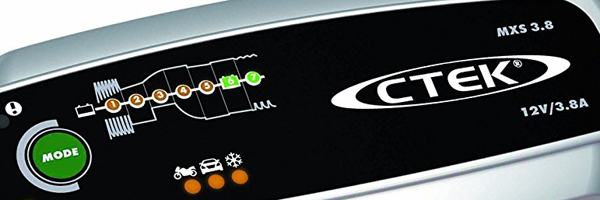 | Advantages Of A Smart Battery Charger10 January 2018 | Tom
A simple trickle charger may look like a good bet but you run the risk of overcharging your battery and causing permanent damage; here we look at the advantages of a more sophisticated smart charger with maintenance and reconditioning modes. Trickle Charger A trickle charger is designed to provide a low rate current that will slowly bring a battery to full charge. Once the battery is in a fully charged state it will continue charging but supposedly only at a rate that is equal to the battery’s self-discharge rate so that the battery remains fully charged. As you can see this is not a very sophisticated method and runs a big risk of overcharging the battery potentially, causing it to ‘gas’, swell and ultimately destroying it – not something that we would recommend. Smart Chargers Smart chargers are much more sophisticated because as well as offering different switchable charging modes they are also programmed to provide a planned and varied output to charge and maintain your battery in the best condition. Most smart chargers have a number of different charging modes, each one tailored to different battery types and charging requirements. For example, the CTEK MXS5.0 has multiple modes for different situations and battery types. Small battery mode suitable for motorcycle batteries; this charges at a slower rate to avoid possible damage caused by charging small batteries too fast All modes feature fully automatic "connect and forget" 8 step 12V charging and automatic temperature compensation to ensure optimum charging performance even in the most challenging conditions. Smart Charger Programs Smart chargers are programmed with multiple automated steps and variations in order to provide the best environment for the battery to accept a full charge. A typical smart charger can have up to 8 or 9 distinct steps to get the best performance from a battery. These programmes will often start with a ‘desulphation’ step that tries to counteract the effects of a deeply discharged and neglected battery After that it will monitor the battery and maintain full charge as necessary but will not just keep forcing energy at it hoping for the best - like many cheap trickle chargers. The big advantage of smart chargers, for those of you lucky enough to have a ‘spare’ car or bike that stays in the garage until summer, is that they can be left connected permanently and will maintain the battery in the best possible condition. Recommended chargers
|
|










